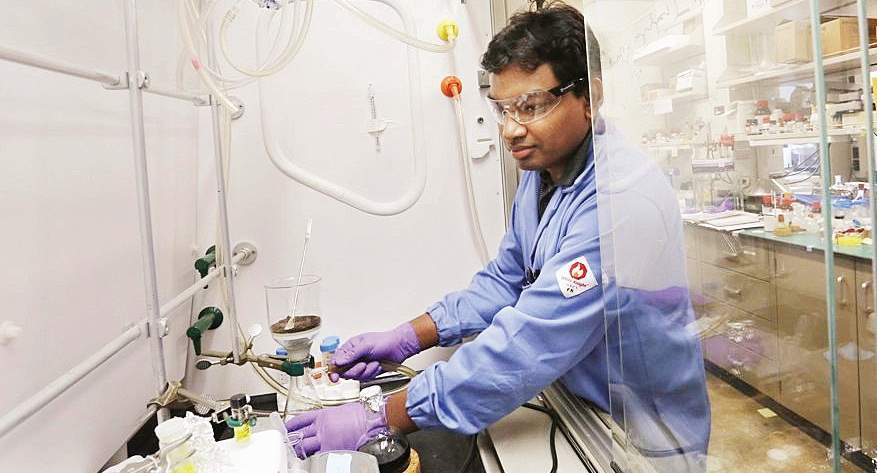Highlights
Our Latest News

FDA approves imaging drug to help identify lung cancer lesions
The most common side effects of Cytalux were infusion-related reactions, including nausea, vomiting, abdominal pain, flushing, dyspepsia, chest discomfort, itching and hypersensitivity. Cytalux may cause fetal harm when administered to a pregnant woman. The use of folate, folic acid, or folate-containing supplements should be avoided within 48 hours before administration of Cytalux...
Read More
What is the cost of treatment of cancer ?
In human body, old and damaged cells are replaced by new. When the growth of cells goes out of control, it forms masses called tumours. This disease of uncontrolled growth of cells is called cancer...
Read More
Desi scientist in US discovers molecule that illuminates cancer cells
A desi scientist in the US, Sakkarapalayam M Mahalingam, an alumni of Indian Institute of Technology (IIT) Madras, has discovered a molecule that illuminates cancerous cells in the human body during surgery, allowing surgeons to have real time localisation of tumour nodules....
Read More
Monitoring the Cervical Health & HPV
Annual pap smears are important to check for HPV and to monitor the health of your cervix. More than half of the World’s Population carrying HPV (human papilloma virus), the chances are good that many of us will have to deal with an abnormal pap smear at some point. Words like pre-cancer create a lot of anxiety and the proposed treatment - a LEEP procedure - can be uncomfortable and painful. We all know someone or have ourselves been through the worrisome wait for test results. But the more educated you are about your body, the more prepared you will feel. The reality is that the vast majority of abnormal pap smears show low grade cervical dysplasia or cervical abnormalities that do not lead directly to pre-cancer cells or a cancer diagnosis
Read More
When it comes to Women’s health, a healthy cervix must be a important track of women’s health agenda. Cervix is a part found at end of the uterus of women that bridges between the vagina and uterus. Some notable health issues like, dyslapsia or cancer or some other conditions may affect the cervix. Regularly getting yourself checked-up and tested is important, but for most women, an abnormal result should not be cause for alarm. The majority of cervix health issues are very treatable and you can feel confident that the next time you have a check-up, everything will be fine.
Read More
When it comes to HPV, even though here is no secret cure in most cases by boosting your immune system and taking the proper steps, you can have a clear pap smear in a matter of weeks. Yes, you can actually reverse your HPV diagnosis, treat it, and get rid of it. This means, once diagnosed, you can work to support your body, boost your immunity, and then, when you return to your OBGyn, the HPV will be gone. There are, of course, certain cases in which HPV and/or an abnormal pap smear can be more serious, so please work with your health care practitioner to assess your situation, and don’t be afraid to get second opinions.
Read More
6 Natural Remedies for HPV and Cervical Health
With good nutrition and the right supplements your immune system could fight off an HPV infection and replace abnormal cells with healthy tissue. With a strong immune system, your body should be able to clear HPV by itself. A full 90% of HPV infections will clear in 2 years according to the World Health Organization, but most of us need to boost our immunity to make that happen quickly
Read More
Human Papillomavirus (HPV)
Briefly, an incident HR-HPV infection can occur by entering the basal layer through an epithelial abrasion. Most incidence infections are cleared, however some remain persistent for years and decades. Persistence of a HR-HPV infection combined with known risk factors (e.g., smoking) may allow the persistent HR-HPV infection to progress to precancer (cervical intraepithelial neoplasia, CIN). If the lesion does not regress and the HR-HPV is able to successfully integrate into the host-cell genome, clonal expansion may occur and result in an invasive cancer.
Read More
Precancerous Cervical Dysplasia
Cervical High-grade Squamous intraepithelial Lesion (HSIL) is a disease of the cervical epithelium, also known as moderate- and high-grade cervical intraepithelial neoplasia (CIN2 and CIN3). HSIL is caused by persistent infection with the cancer-causing human papillomavirus (HPV). HPV infection is common in sexually active women, with a lifetime risk of infection of 75%¹. Most HPV infections are in an incubation period, and most infected individuals clear the virus on their own within three years² . In non-cleared individuals, persistent oncogenic HPV infection may lead to HSIL and invasive cervical cancer.
Read More
